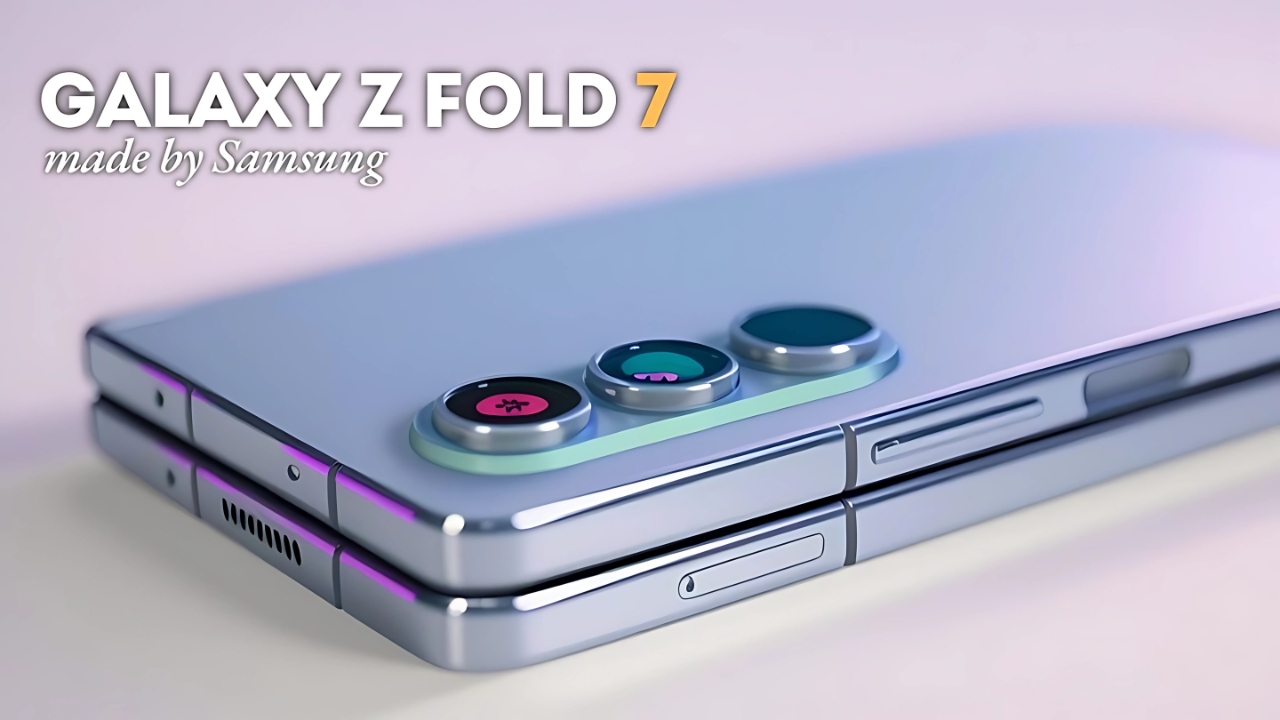Samsung Galaxy Z Fold 7: Remember when flip phones were the coolest thing ever? You could snap them shut dramatically after ending a call, and they seemed practically indestructible. Fast-forward to today’s foldable smartphones, and that same satisfying fold comes with a nagging worry – “How long before this expensive screen gives up on me?”
Samsung just answered that question with the Galaxy Z Fold 7, and the answer might surprise you.
The Numbers That Change Everything
The Galaxy Z Fold 7’s display has officially survived 500,000 folding cycles in independent testing conducted by Bureau Veritas, a global testing and certification company. Think about what that actually means for your daily life.
If you’re someone who folds and unfolds your phone around 100 times a day – checking messages, taking calls, switching between apps – this display could theoretically last you over 10 years. Even if you’re a power user who constantly folds your device more than 200 times daily, you’re still looking at over six years of reliable use.
This represents more than double the durability rating of its predecessor, the Galaxy Z Fold 6, which was tested for 200,000 folds. That’s not just an incremental improvement – it’s a massive leap forward that fundamentally changes how you can think about foldable phones.
Why This Breakthrough Matters to You
Let’s be honest – durability has been the elephant in the room for foldable phones. You’ve probably seen those cringe-worthy videos of early foldables developing screen cracks or dead pixels right along the fold line. Maybe you’ve wanted to try a foldable but held back because of those horror stories.
Samsung says that “durability is no longer a limiting factor in the lifespan of foldable smartphones”, and for the first time, that claim has some serious testing to back it up.
Think about your current phone usage. Do you hesitate before closing your laptop because you’re worried about the hinge wearing out? Probably not, because modern laptop hinges are built to last. Samsung is essentially bringing that same confidence to foldable phones.
The Science Behind the Strength
Samsung Display engineers took inspiration from bulletproof glass while creating the display for the Galaxy Z Fold 7. That might sound like marketing speak, but there’s real engineering innovation here.
Just like bulletproof glass relies on multiple layers to absorb and disperse energy from impacts, Samsung has applied a multi-layer shock-resistant structure to the new foldable OLED panel.
Here’s what actually changed: Samsung made the outer Ultra Thin Glass layer 50% thicker to better absorb external pressure, developed a new high-elastic adhesive that offers four times better recovery performance, created a flattening structure that spreads shock evenly across the display, and added a high-strength titanium plate backing the display.
These aren’t just minor tweaks – they represent a fundamental rethinking of how foldable displays handle stress and wear.
Real-World Impact
The testing process itself tells you something important about how seriously Samsung is taking durability. The panel was folded and unfolded continuously over 13 days at a steady temperature of 25 degrees Celsius, simulating years of real-world use in a controlled environment.
But here’s what the numbers don’t tell you – this breakthrough could finally make foldable phones practical for people who actually use their devices heavily. Business travelers who are constantly opening their phones during flights. Parents who fold and unfold their devices hundreds of times while multitasking with kids. Students who switch between tablet mode for reading and phone mode for texting throughout the day.
Previously, these use cases came with an expiration date. Now, the display itself is likely to outlast the phone’s other components and even Samsung’s software support promises.
Beyond Just Surviving
What’s interesting is that these durability improvements came alongside making the device thinner and lighter. These changes not only make the Galaxy Z Fold 7’s display more durable but also contribute to its slimmer and lighter design.
This is important because it shows Samsung isn’t just building a tank – they’re building a device that’s both tough and practical for everyday carry. You’re not sacrificing elegance for durability.
Putting It in Perspective
Nearly every Galaxy foldable to date has been rated at 200,000 folds, giving devices an estimated lifespan of around five years assuming 100 folds per day. But even those earlier ratings were conservative – Samsung’s last-gen Fold 5 actually survived around 400,000 folds in a stress test before it gave out.
The competition has been promising higher numbers for a while. The OnePlus Open, released in 2023, was rated for 1,000,000 folds. But Samsung’s approach appears more measured and realistic, with third-party verification backing up their claims.
What This Means Moving Forward
The Galaxy Z Fold 7’s durability milestone represents more than just better engineering – it signals that foldable technology is finally mature enough for mainstream adoption. When durability anxiety disappears, people can focus on what foldables actually enable: a phone that becomes a tablet when you need it, without compromise.
As Samsung Display’s Executive Vice President Hojung Lee put it, “As foldable OLED enters its seventh year of commercialization, we’ve achieved another meaningful breakthrough in both durability and design”.
This isn’t just about surviving more folds – it’s about reaching the point where folding is as natural and worry-free as touching your phone’s screen or pressing its buttons.
For anyone who’s been waiting for foldable phones to “mature,” the Galaxy Z Fold 7 might just be that turning point. When your biggest concern shifts from “Will this break?” to “Do I actually want a foldable phone?”, the technology has finally arrived.
The anxiety-inducing days of babying your foldable phone might finally be behind us. And honestly, it’s about time.
